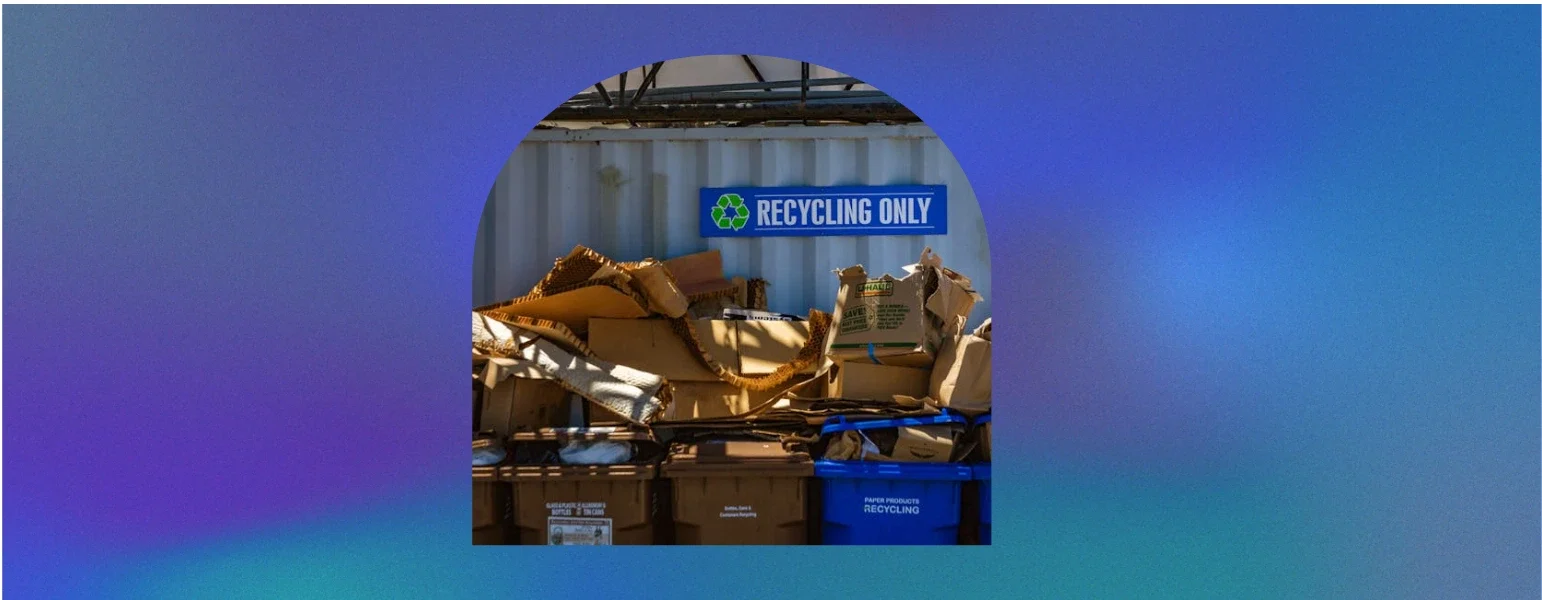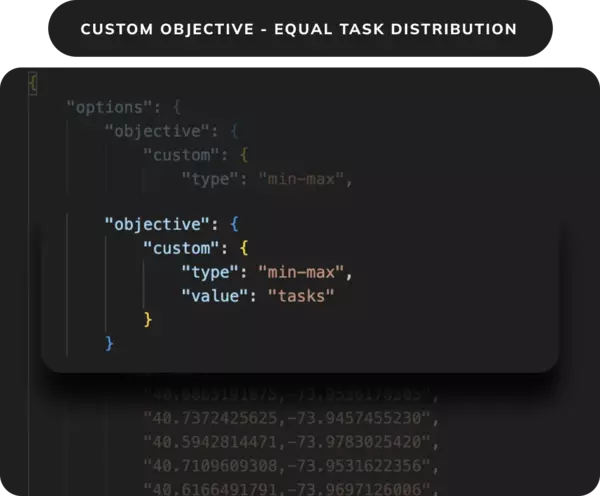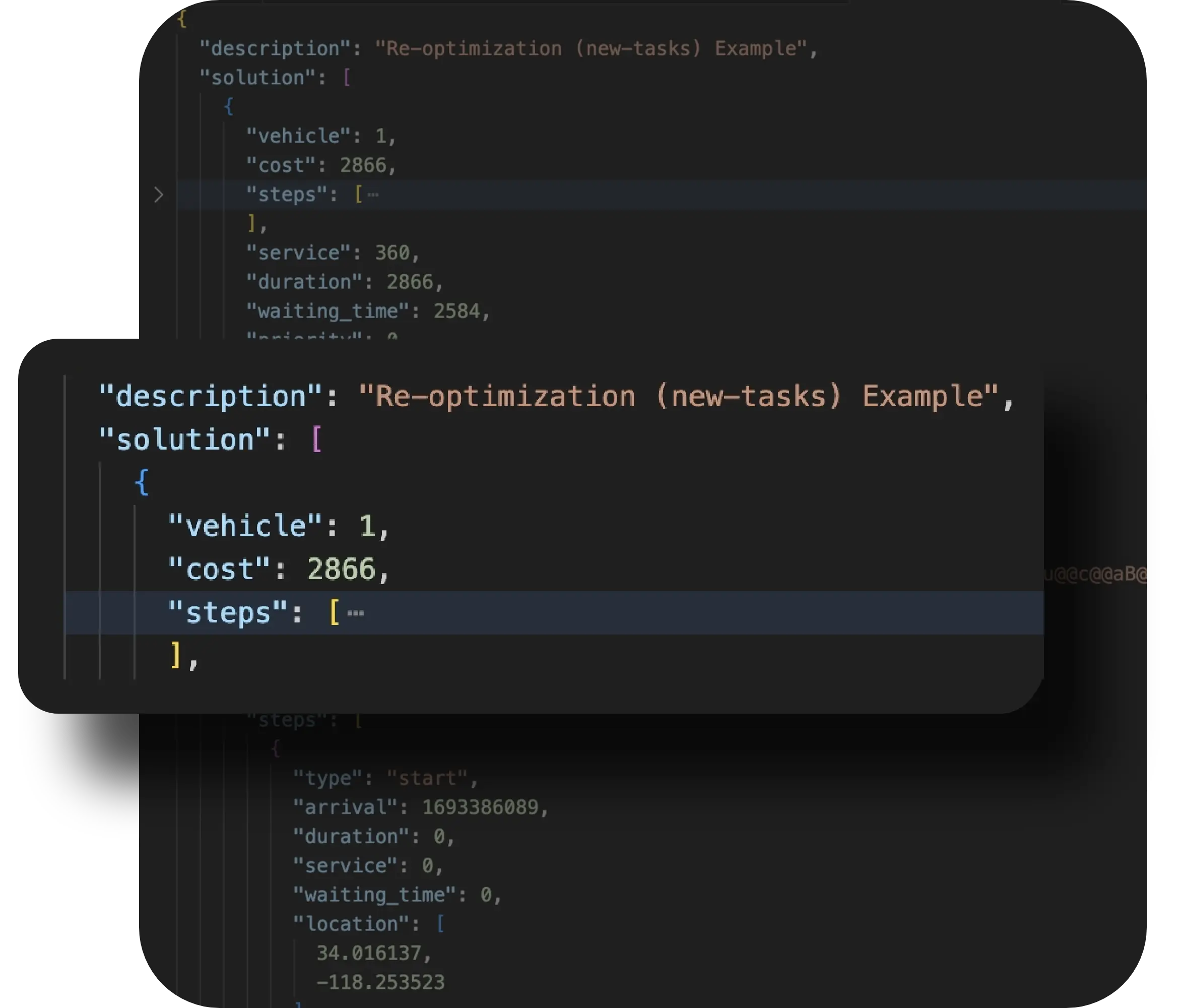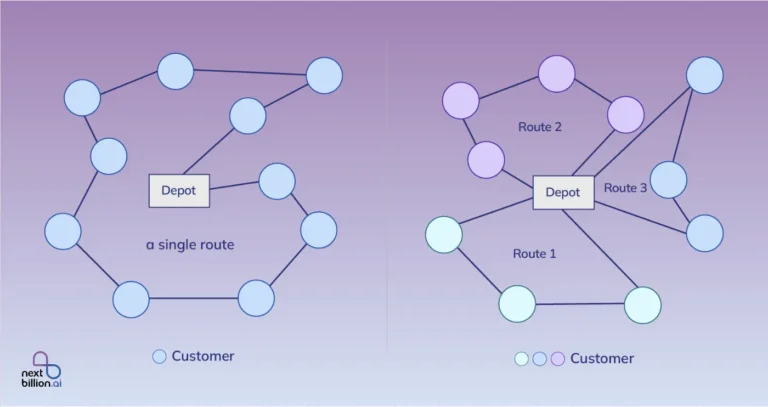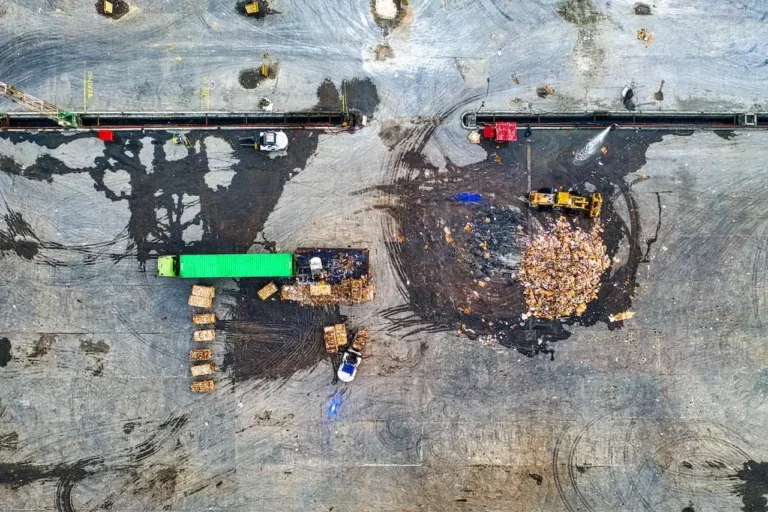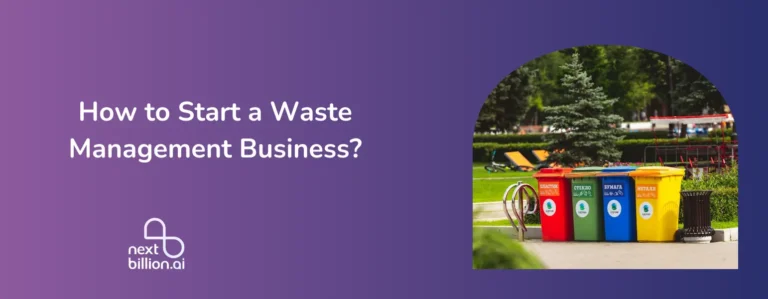
Table of Contents
In today’s healthcare landscape, a growing number of medical facilities and procedures produce massive quantities of biohazardous waste daily. More than 2 million tons of medical waste is produced in the United States annually. The global biohazard waste management market is to reach $22.6 billion by 2026, and proper and safe methods of disposal are more paramount than ever. However, meandering routes for biohazard waste collection cause delays, increase operational expenses, and even pose a risk to safety.
AI-enabled route optimization is just the right solution for transforming the collection of biohazard wastes. Route optimization software helps waste collection companies collect biohazard waste optimally without exposing the public and workers to the waste.
Route optimization software makes it easier for fleet managers to assign trucks to collect waste from different facilities in the region. Manual assignment is tedious and becomes expensive in the long run because some errors in route planning can cause trucks to drive longer distances or increase idle time, leading to inefficient resource allocation.
With the increasing logistic costs, it is best to implement new technology and techniques in the operation to improve productivity and ROI. Route optimization software generates dispatch-ready routes after analyzing all the constraints that an over-worked human brain might consider at the same time. Besides, it enhances the output in real time. So, rest assured your drivers will seamlessly pickup the biohazard waste and dump in the processing facility within the time-frame.
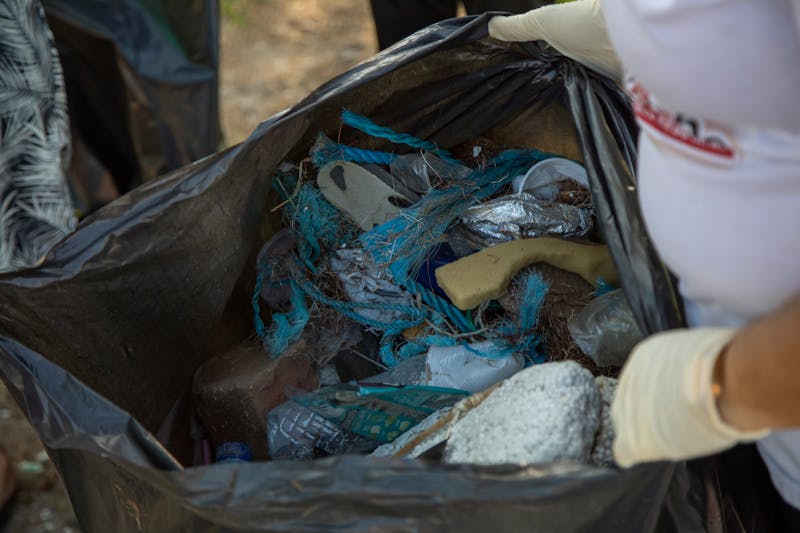
Understanding Route Optimization Software
Route optimization software assists waste collection companies in determining the most efficient routes for collecting biohazardous waste. It provides the best and shortest route such that cost-efficiency is achieved and resources are allocated in a better way. Such software indicates the optimal route to reach the destination. It considers factors such as traffic, roadblocks, and the time it takes to pick up waste at each location.
This software uses Artificial Intelligence and Machine learning to find the optimal solution. For instance, if a hospital emits more waste on some days, route optimization software will optimize the schedule with that pattern. It ensures that drivers use the best routes in the most efficient way possible, saving time, fuel, and money in the process. It also ensures safety by helping avoid routes that can possibly increase risks to workers or the public.
Route Optimization Software: Optimizing Biohazard Waste Collection Routes

AI-based route optimization has transformative solutions to problems in biohazard waste collection through the dynamic planning of routes that consider real-time factors, such as traffic, demand for collection, and the capacity of the vehicle. Therefore, through advanced algorithms, companies involved in waste management can come up with optimized routes that will cut down on time, fuel, and risk exposure due to non-compliance while ensuring safe, efficient, and cost-effective management of biohazardous waste.
For instance, NextBillion.ai’s route optimization API uses a multi-faceted approach for generating optimized biohazard waste collection routes. It uses spatial analysis and advanced algorithms that consider 50 parameters to generate cost-efficient routes. This API can be integrated with the telematics solution to
Route optimization tools powered by AI use real-time data to predict traffic patterns and offer alternative routes in the event of disruptions, keeping collection schedules punctual. These tools analyze location data, waste volumes, and other variables to design the shortest, safest, and most fuel-efficient paths. The AI-driven approach identifies patterns and peaks in waste generation, and thus, companies can adapt the collection frequency to the actual output of each facility, thus reducing unnecessary trips.
The backbone of artificial intelligence in route optimization with the help of machine learning models. The machine learns and develops predictive abilities in terms of waste generation with its knowledge base in historical data. The trends of the generated wastes are analyzed with better times and routes and mainly prove beneficial for more significant networks that have a differential rate of waste generation. As time passes, machine learning allows more scalability so that complex distributed operations are easy to control without sacrificing efficiency.
Features of Route Optimization API

NextBillion.ai is among the leading optimization routes for waste collection, mainly specializing in hazardous waste collection problems. Its full API boasts a long list of tools uniquely geared toward the many challenges that waste management agencies face to ensure efficiency and compliance at all points of the collection process.
The heart of NextBillion.ai is its highly effective route optimization API. It analyzes all relevant data, including traffic patterns, waste generation rates, and truck specifications, to build routes that minimize travel distance and fuel consumption, the only way to ensure a cost-effective process for hazardous waste management.
Here are the features of NextBillion.ai Route Optimization API:
- It can generate dispatch-ready routes within seconds.
- The API considers tasks pre-requisite, like tool pickup or fuel re-filling and creates logical routes that allocate time for such tasks.
- It can be integrated with all logistics applications, like Salesforce, Samsara, and ServiceNow.
- The API has AI and ML-powered capabilities, so it learns and optimizes the routes based on your data.
- It can support around 10,000 orders in a single route optimization problem.
NextBillion.ai supports 50 parameters, but let’s look at a few of the important ones:
- Capacity: A garbage truck can carry multidimensional quantities of capacity. For instance, it can carry 6 trucks of waste bins, 100 kg of weight, and 10 cubic meters of volume. So, NextBillion.ai can take these multidimensional quantities and assign trucks accordingly.
- Amount: Similarly, if a truck can pick up different types of waste, then this parameter can help define how much of each category of waste a truck can carry.
- Skills: Every truck is assigned to handle a particular type of waste, like a specialized truck for collecting biohazard waste. This helps in optimizing delivery routes based on the different skills and abilities of trucks and vehicles.
Besides, there are different parameters, like:
Maximum Waiting Time (max_activity_waiting_time): The API ensures that the maximum waiting time doesn’t exceed the specified limit, like 8 minutes. If the driver has to wait for more than 8 minutes after arriving at the location, then the API will not assign those locations. Those locations can be reassigned.
Equal Task Distribution: It includes parameters that help in achieving basic objectives, like the distribution of travel costs among all the routes, the distribution of tasks equally among the routes, minimizing the time taken to complete all the tasks, and minimizing the deployment of vehicles.
Reoptimization (New Tasks): If a new stop needs to be added to the itinerary, the API can accommodate the new task without making many changes to the original changes.
Maximum Ride Time (max_time_in_vehicle): This limits the time a shipment can stay in the truck. It is an essential parameter for biohazard waste that needs to be dropped off at the processing facility within a given time frame.
Maximum Distance and Maximum Travel Time (max_distance and max_travel_time): These parameters limit the maximum distance and time a vehicle can travel. This helps ensure that vehicles do not overrun, reducing unnecessary wear and tear.
Steps for Implementing an AI-Powered Route Optimization System
Here’s how a route optimization planner can be used for optimizing routes for biohazard waste collection:
Step 1. Collect all the essential data, such as the total number of vehicles, the number of zones you want to divide the region into, depots, waste collection points, the number of vehicles per region, shift duration, and others.
Step 2. Visualize the data on the map. It divides the region into a specified number of zones such that no zone overlaps with one another using Voronoi tessellation.
Step 3. Within each zone, waste pick-up locations are generated, and you can prioritize them as per their handling process.
Step 4. Standardize trucks’ capacity to ensure that each truck can collect the waste according to its capacity. Also, allocate specialized trucks to handle high-risk waste.
Step 5. Run the Route Optimization API, and it will provide the desired routes as per constraints.
Now, there are chances that some locations may remain unassigned. Hence, you can run the optimization API again to allocate the left-out truck that covers the unassigned bins.
How to Categorize the Trucks Based on the Type of Biohazard Waste?
Each waste needs to be handled in a specific way such that there is no environment contamination. Biohazard waste is biomedical or infectious waste that contains any waste that possibly contains infectious substances. Any biological waste, such as tissues, organs, or body fluids, falls in this category. In a hospital or other healthcare institution, it is collected from the wards in biohazard waste bags, which are puncture-resistant and labeled to avoid unintentional exposure.
There are different types of biohazard waste, and depending upon its type, fleet managers can prioritize which waste needs to be collected first, keeping in mind the compliance regulations and worker’s safety. Here are the different types of waste:
- Human Anatomical Waste: This includes anatomical parts, tissues, and organs removed from the body through surgery, autopsy, or any other clinical procedure.
- Pathological Waste comprises items containing biopsied materials, cultures, or specimens. Most of this waste is observed in a laboratory or diagnostic center.
- Sharps Waste: This includes needles, scalpel blades, glass slides, and so on. Depending on how they are disposed of properly, they may potentially cause infection and physical injury.
- Contaminated Items: Items contaminated with blood or other potentially infectious bodily fluids, such as bandages, disposable medical gloves, and gowns.
- Microbiological Waste: Laboratory cultures, stocks, or other materials containing harmful microorganisms must be removed.
Human anatomical waste is generally incinerated at high temperatures in specialized incinerators, and pathological waste undergoes chemical treatment, is sterilized using high-pressure steam, or is incinerated. These treatments are mostly used for processing sharp waste, contaminated items, and microbiological waste. However, the process might vary depending upon the local regulations.
Key Benefits of Optimizing Biohazard Waste Collection Routes
Optimizing biohazard waste collection routes with AI and ML brings many benefits, ranging from efficiency to safety, in the management of medical waste.
1. Improved Compliance and Safety
AI route planning ensures that waste collection is done according to the standards of regulations. This results in fewer possibilities of a regulatory violation. Also, it ensures the safety of employees, staff, and citizens.
2. Resource Management
Accurate collection scheduling also reduces the risks of an overflow or delay in waste management, which leads to less exposure to health risks for both the collecting personnel and the public. Efficient route optimization reduces operational costs by reducing distances traveled and the fuel used. This helps waste management companies save on labor and fuel, making the operations resource-efficient.
3. Environmental Sustainability
Reduced distance and time for traveling reduce carbon emissions, which is in line with the aims of environmentally friendly waste management. Reduced distance and time for traveling result in reduced greenhouse gas emissions through collection vehicles, thus facilitating sustainable medical waste disposal.
4. Scalability
AI-based systems make it easier to scale waste collection operations because routes are easily adjusted whenever the number of facilities increases. As new facilities or waste generation sites come in, AI easily adjusts the routes without affecting efficiency, making it cost-effective to expand services.
With these advantages, a safer, more reliable, and environmentally responsible medical waste collection system that positions AI-driven route optimization as critical to modern biohazard waste management is now possible.
The Bottom Line
The optimization of biohazard waste collection routes using AI-driven solutions ensures that medical waste is managed efficiently and safely, meeting all the standards set by law. By applying AI and machine learning, waste management companies can optimize routes to ensure efficiency, reduce costs in operation, and ensure high safety and environmental standards. These advancements make biohazard waste collection sustainable, cost-effective, and scalable for healthcare providers and society as a whole. Optimized routes are the actual foundation for a safer and cleaner future in medical waste management.
About Author
Bhavisha Bhatia
Bhavisha Bhatia is a Computer Science graduate with a passion for writing technical blogs that make complex technical concepts engaging and easy to understand. She is intrigued by the technological developments shaping the course of the world and the beautiful nature around us.





